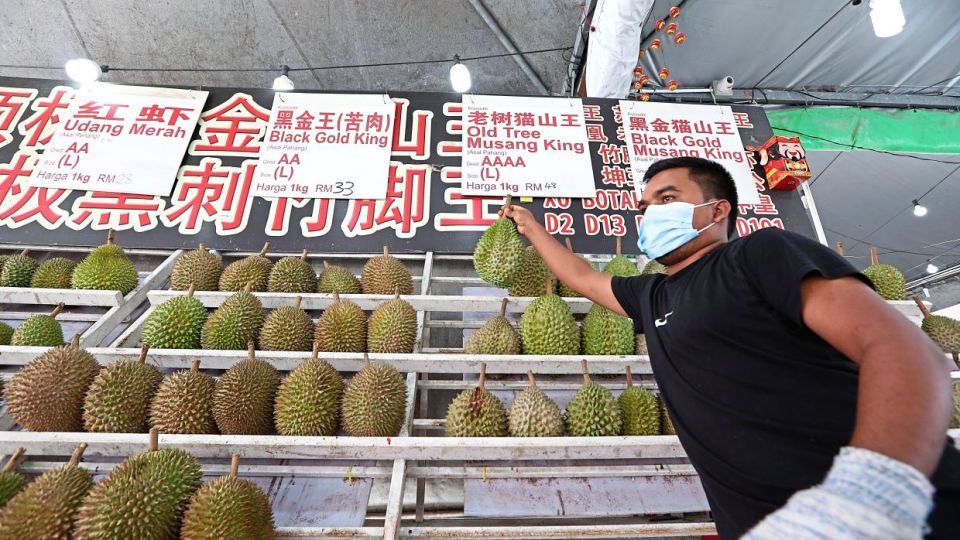February 17, 2022
GEORGE TOWN – Durians may cost more in the coming harvest season this April due to a spike in the cost of fertilisers and pesticides.
Farmer Max Goh, 46, said the price of multiple kinds of fertiliser used on his farm of about 400 trees has gone up by more than 40% since last year.
“We have fertilisers for rooting and to reinforce the trees after the harvest, as well as fertilisers for flowering and fruiting.
“Fertilisers are used throughout the year as durian trees require a great amount of care to produce good fruit.
“Since the middle of last year, the average price of three types of fertiliser used on my farm has increased from RM110 to RM160 for each 25kg bag,” he said yesterday.
Besides fertilisers, Goh said the cost of pesticides has also increased from RM300 to RM500 for 20-litre concentrates.
“Despite the rising costs of producing durians, I am expecting a good harvest this year and hope the larger supply will make up for the high costs.
“I expect the prices of durians to retail at between 10% to 20% higher after the harvest in April and May, but factors such as the Covid-19 situation and amount of harvest might balance up prices.
“If Covid-19 cases are high leading to a drop in demand, or if there is an abundant harvest, then the price of durians might fall,” he added.
Another farmer, Ng Wei Dave, whose farm is in Sungai Ara, said he has seen three price hikes for fertiliser since last year.
“I am worried that the price will increase further. Fertilisers, which were once priced between RM120 and RM130 per 50kg, now cost almost RM190 to RM200.
“Commonly-used fertilisers such as NPK… have also increased in price by about 30%.
“There were three major price hikes in August, October and November last year, and I was told that suppliers might increase the price further.
“If such costs continue to increase, I’ll lose my profit from selling durians after the harvest as it’s not appropriate to simply increase retail prices,” said Ng, 40.
Although it was too early for 39-year-old farmer Tan Chee Wei to predict retail prices, he said the price increase of fertilisers was not favourable to farmers.
“Everything is increasing in price, including fertilisers.
“We understand the people’s hardship during these difficult economic times, and durians are meant to be appreciated by everyone.
“As we struggle to constantly compete for pricing and to keep durians affordable, the rising cost of production will be a challenge for us to market the fruit,” he said.
Attempts to contact a major fertiliser supplier in George Town for comments were futile.
During the durian season in 2020, orchard owners and sellers were caught in a bind as they could not sell their harvest due to the movement control order.
Many durians went to waste or were frozen and sold at lower prices.
After restrictions eased last year, durians were back in demand and more easily marketed with sellers providing services such as direct delivery to customers and wholesalers exporting them.


